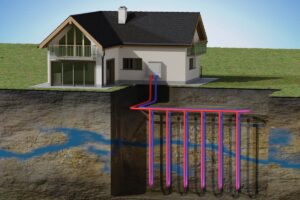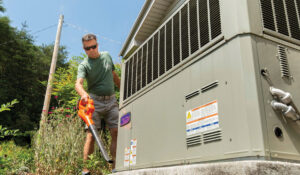If you want to lower your energy use, a great way to start is by changing your behavior. While you don’t have control over the cost of electricity, you can control how much energy you use.
Setting goals
Instead of thinking about your bills in terms of dollars, think about them in terms of kilowatt-hours (kWh). A kWh is the unit of energy used for most electric bills. Review your monthly kWh usage to get an idea of how much you use every month. Then set goals for the next month. Try to use less energy than the month before, and check your results on your next bill.
Knowing when
Some electric cooperatives offer time-of-use rates, which means electricity costs are dependent on the time of day. This pricing structure more closely reflects the cost to electric utilities and helps consumers understand that energy costs more when the demand for it is higher.
Even if your electric bill does not include time-of-use rates, it can be beneficial to delay energy-intensive chores or tasks to when demand is lower. Peak hours are typically in the morning as we prepare for work and in the evening when we get home and start preparing food and turning on entertainment devices. Doing laundry and running the dishwasher are easy activities to delay until after peak hours.
Powering off
When looking for energy savings, remember that “off” is the most efficient setting. Turning off lights is a classic strategy, especially if your lighting is incandescent. If it is, it’s time to switch to energy-
saving LED lightbulbs.
Computers and gaming systems can waste energy, even when in sleep mode. The higher the wattage and the more hours the device is on, the more energy is used. Laptops use the least energy, followed by personal computers at about 200 watts. Gaming consoles typically use less energy than gaming PCs. Don’t forget to turn off the monitor as well.
You can lower your energy use even more with smart power strips, which cut power to devices that are not in use. Many electronics continue to draw power even when they are turned off. This could add 5-10 percent to your monthly bill, according to the U.S. Department of Energy. Installing smart power strips is an easy way to ensure devices are completely turned off and not drawing power.
Adjusting temperature
When it comes to lowering your energy use, check the settings on your thermostat. Keep in mind, the weather affects your electric bill for heating and air conditioning. The closer you keep the indoor temperature to the outdoor temperature, the more you will save. You want to protect your home from damage in extreme heat and cold, but if you can turn the temperature down a few degrees in winter and up in summer, you will save energy.
Keeping clean
Ensuring the filters in your heating and cooling system are clean is an easy way to keep your system maintained and operating efficiently. Adding annual servicing by a professional maximizes efficiency and can lengthen the life of your system.
Understanding your energy use and making small adjustments to your routine will help you reach your energy use goals.
Photo above: If you can turn the temperature down a few degrees in winter and up a few in summer, you will save on energy costs. Photo courtesy of Mark Gilliland.










